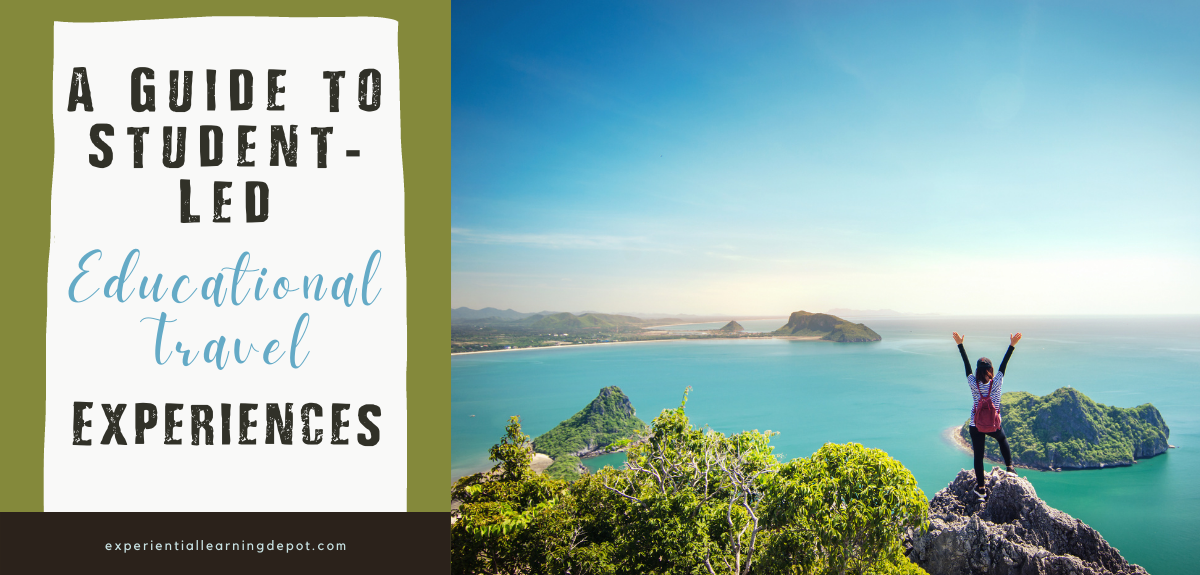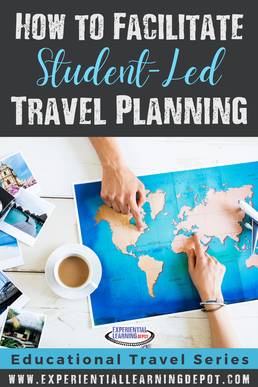|
Experiential learning resources for the innovative educator
The bulk of my experience as an educator was at a school that was student-centered, travel-encouraged, and predominantly project-based. Combine all three and you have student-directed school trips. The benefits of educational travel are enormous! I highly encourage reading on! I participated in dozens of school trips from one night camping excursions to weeks abroad. Out of all of those trips I only planned and organized a couple of them myself. All of the others were planned by or with students as project based learning school projects. I provided assistance with logistics, but the students gave the trips meaning and purpose. Some trips that were planned by students include an earth science trip to Hawaii, an ecology trip to California, marine biology trip to Florida, and a tropical biology trip to Costa Rica. Note: Not all trips have to be biology related! The ones just mentioned are because my background and teaching license is in biology. Step-By-Step Guide to Student-Led Educational Travel ExperiencesWhere do school trip ideas come from? All educational travel experiences start with a "spark". There is some input a student receives that strikes a chord. They may come across an interesting concept while working on a different project. They may hear stories from friends, family, teachers, students, or community members about a place that ignites curiosity. Maybe they even learn about something on a documentary, from a podcast, social media or in the news. It's typically accidental. The student isn't necessarily "looking" for a school trip to plan. One of my students was interested in primates. She wanted to know everything about primates from natural history to a career in primatology. I gave her a book to read for a project she was doing on primates called "A Primate's Memoir." In the midst of exploring this topic, she decided she wanted to visit a primate research center. The closest one we could find was in Iowa. We tried EVERYTHING to get a hold of this primate reserve, but we were ultimately unable to connect. She went back to the drawing board. She discovered a primate research center in Sacramento, California and from that point on was determined to get us out there to study primates. This interest in primates launched this student into a high school career of school trip planning. She planned the trip to California and upon our return decided she needed to get to a place where she could observe primates in their natural habitat. Her senior project then became planning a tropical biology school trip to Costa Rica. Never did it cross her mind when she started school that she would travel across the world. A student decides they want to plan a trip. What's next? Ok, so let's say this student just discovered this primate research center in California and now she wants to go. What's next? If it's to be a school trip, there are requirements she needs to follow. She needs to identify the purpose of the trip, research the cost, look into learning activities, connect with community experts, and create a fundraising plan. Part of planning a school trip requires determining a specific purpose that is educational in nature. This student quickly learned that California isn't where one typically goes to study primates. She also discovered that California has diverse ecosystems scattered throughout. When you drive an hour in any direction in MN what you see is more or less the same. When you drive an hour in any direction in California the landscape completely changes. It is night and day between San Francisco and Napa Valley, for example. So the student modified her purpose, broadening it to ecology to study biomes, biodiversity, climate, etc. This made it easier to align the educational travel experience to state standards while sticking by her original plan to visit the primate research center in Sacramento. My students use an Educational Travel Planning Checklist (as do I when I am planning school trips) that I created to assist them with the process. This resource is available to download for free in my experiential learning store. My students research the trop planning categories on the guide sheet, put their information into a slideshow, and present their trip plan to the school board. The school board then approves the trip. The slideshow below was created by the student interested in primates and presented by her to the board. The trip to California was approved. Preliminary plans are in place and the trip has been approved. Now what?
The first step once the school trip has been approved is to start fundraising efforts. These fundraisers can and should also be student-led. A school policy was that students needed to raise a certain amount of money before making any trip arrangements. Check out this blog post on student-led fundraisers. Once an agreed upon amount of money has been raised, students start preparing for the trip (with your guidance). They will refine their itinerary; book tours, lodging, car rental if needed, etc; complete pre-trip projects; create project proposals for on-site trip projects; and connect with trip experts. Even if educational travel isn't a reality at your school, consider assigning students to plan a theoretical school trip. The skills and knowledge that the student gained in the planning process alone were staggering. She learned how to budget. She gained content knowledge, in this case related to high school ecology. She learned some topography techniques and had some lessons in geography. She gained experience in public speaking and speech writing. She even practiced important life skills and competencies such as organizing, planning, follow-through, and determination. She learned how to fail, go back to the drawing board, and try again. Planning a trip is an impressive learning experience. Feel free to download the Trip Plan Guideline mentioned above. If you find the checklist helpful, but would like prepared templates for organizing plans and numbers, check out my digital educational travel planning templates. These templates are useful for teacher planners and student planners, as well as for real educational travel experiences and hypothetical ones. Student-led trip planning is just one of many ways to implement student-directed learning in your classroom. I encourage you to browse my educational travel blog series, perfect for school teachers, homeschool parents, and youth group coordinators. I recommend starting with my post on the Benefits of Educational Travel and then get inspired by checking out How to Enhance Educational Travel with Project Based Learning. Follow Experiential Learning Depot on Pinterest & Instagram, Facebook and Youtube for more on experiential education. You can also check out my Facebook Group, Experiential Learning Community for k-12 Teachers for support and more final product ideas! Observe. Question. Explore. Share.
0 Comments
Your comment will be posted after it is approved.
Leave a Reply. |
Blog IntentTo provide innovative educational resources for educators, parents, and students, that go beyond lecture and worksheets. AuthorSara Segar, experiential life-science educator and advisor, curriculum writer, and mother of two. Categories
All
|




 RSS Feed
RSS Feed